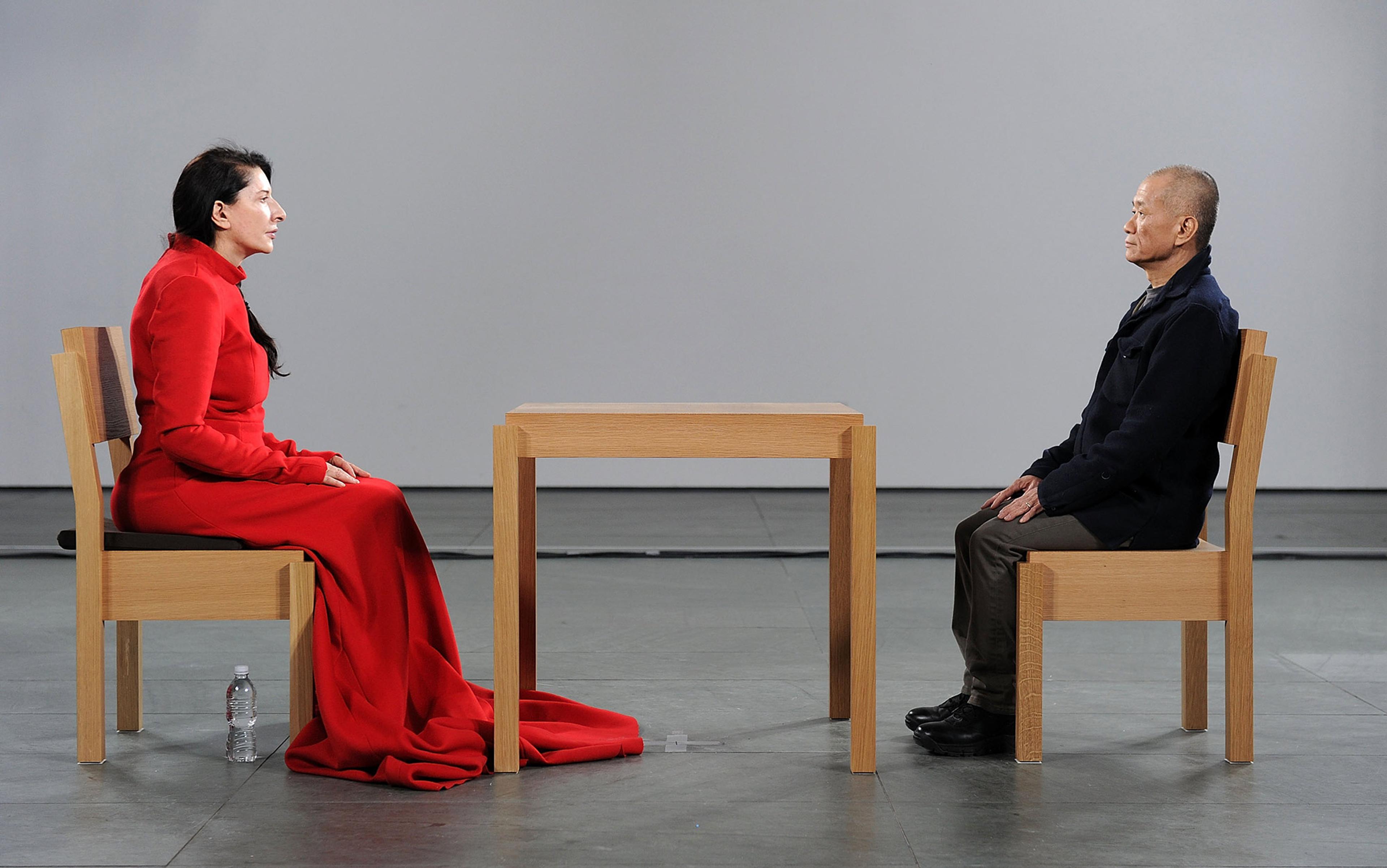Western philosophers have not, on the whole, regarded Buddhist thought with much enthusiasm. As a colleague once said to me: ‘It’s all just mysticism.’ This attitude is due, in part, to ignorance. But it is also due to incomprehension. When Western philosophers look East, they find things they do not understand – not least the fact that the Asian traditions seem to accept, and even endorse, contradictions. Thus we find the great second-century Buddhist philosopher Nagarjuna saying:
The nature of things is to have no nature; it is their non-nature that is their nature. For they have only one nature: no-nature.
An abhorrence of contradiction has been high orthodoxy in the West for more than 2,000 years. Statements such as Nagarjuna’s are therefore wont to produce looks of blank incomprehension, or worse. As Avicenna, the father of Medieval Aristotelianism, declared:
Anyone who denies the law of non-contradiction should be beaten and burned until he admits that to be beaten is not the same as not to be beaten, and to be burned is not the same as not to be burned.
One can hear similar sentiments, expressed with comparable ferocity, in many faculty common rooms today. Yet Western philosophers are slowly learning to outgrow their parochialism. And help is coming from a most unexpected direction: modern mathematical logic, not a field that is renowned for its tolerance of obscurity.
Let’s start by turning back the clock. It is India in the fifth century BCE, the age of the historical Buddha, and a rather peculiar principle of reasoning appears to be in general use. This principle is called the catuskoti, meaning ‘four corners’. It insists that there are four possibilities regarding any statement: it might be true (and true only), false (and false only), both true and false, or neither true nor false.
We know that the catuskoti was in the air because of certain questions that people asked the Buddha, in exchanges that come down to us in the sutras. Questions such as: what happens to enlightened people after they die? It was commonly assumed that an unenlightened person would keep being reborn, but the whole point of enlightenment was to get out of this vicious circle. And then what? Did you exist, not, both or neither? The Buddha’s disciples clearly expected him to endorse one and only one of these possibilities. This, it appears, was just how people thought.
At around the same time, 5,000km to the west in Ancient Athens, Aristotle was laying the foundations of Western logic along very different lines. Among his innovations were two singularly important rules. One of them was the Principle of Excluded Middle (PEM), which says that every claim must be either true or false with no other options (the Latin name for this rule, tertium non datur, means literally ‘a third is not given’). The other rule was the Principle of Non-Contradiction (PNC): nothing can be both true and false at the same time.
Writing in his Metaphysics, Aristotle defended both of these principles against transgressors such as Heraklitus (nicknamed ‘the Obscure’). Unfortunately, Aristotle’s own arguments are somewhat tortured – to put it mildly – and modern scholars find it difficult even to say what they are supposed to be. Yet Aristotle succeeded in locking the PEM and the PNC into Western orthodoxy, where they have remained ever since. Only a few intrepid spirits, most notably G W F Hegel in the 19th century, ever thought to challenge them. And now many of Aristotle’s intellectual descendants find it very difficult to imagine life without them.
That is why Western thinkers – even those sympathetic to Buddhist thought – have struggled to grasp how something such as the catuskoti might be possible. Never mind a third not being given, here was a fourth – and that fourth was itself a contradiction. How to make sense of that?
Well, contemporary developments in mathematical logic show exactly how to do it. In fact, it’s not hard at all.
At the core of the explanation, one has to grasp a very basic mathematical distinction. I speak of the difference between a relation and a function. A relation is something that relates a certain kind of object to some number of others (zero, one, two, etc). A function, on the other hand, is a special kind of relation that links each such object to exactly one thing. Suppose we are talking about people. Mother of and father of are functions, because every person has exactly one (biological) mother and exactly one father. But son of and daughter of are relations, because parents might have any number of sons and daughters. Functions give a unique output; relations can give any number of outputs. Keep that distinction in mind; we’ll come back to it a lot.
Now, in logic, one is generally interested in whether a given claim is true or false. Logicians call true and false truth values. Normally, and following Aristotle, it is assumed that ‘value of’ is a function: the value of any given assertion is exactly one of true (or T), and false (or F). In this way, the principles of excluded middle (PEM) and non-contradiction (PNC) are built into the mathematics from the start. But they needn’t be.
To get back to something that the Buddha might recognise, all we need to do is make value of into a relation instead of a function. Thus T might be a value of a sentence, as can F, both, or neither. We now have four possibilities: {T}, {F}, {T,F} and { }. The curly brackets, by the way, indicate that we are dealing with sets of truth values rather than individual ones, as befits a relation rather than a function. The last pair of brackets denotes what mathematicians call the empty set: it is a collection with no members, like the set of humans with 17 legs. It would be conventional in mathematics to represent our four values using something called a Hasse diagram, like so:
{T}
↗ ↖
{T, F} { }
↖ ↗
{F}
Thus the four kotis (corners) of the catuskoti appear before us.
In case this all sounds rather convenient for the purposes of Buddhist apologism, I should mention that the logic I have just described is called First Degree Entailment (FDE). It was originally constructed in the 1960s in an area called relevant logic. Exactly what this is need not concern us, but the US logician Nuel Belnap argued that FDE was a sensible system for databases that might have been fed inconsistent or incomplete information. All of which is to say, it had nothing to do with Buddhism whatsoever.
Even so, you might be wondering how on earth something could be both true and false, or neither true nor false. In fact, the idea that some claims are neither true nor false is a very old one in Western philosophy. None other than Aristotle himself argued for one kind of example. In the somewhat infamous Chapter 9 of De Interpretatione, he claims that contingent statements about the future, such as ‘the first pope in the 22nd century will be African’, are neither true nor false. The future is, as yet, indeterminate. So much for his arguments in the Metaphysics.
The notion that some things might be both true and false is much more unorthodox. But here, too, we can find some plausible examples. Take the notorious ‘paradoxes of self-reference’, the oldest of which, reputedly discovered by Eubulides in the fourth century BCE, is called the Liar Paradox. Here’s its commonest expression:
This statement is false.
Where’s the paradox? If the statement is true, then it is indeed false. But if it is false, well, then it is true. So it seems to be both true and false.
Many similar puzzles turned up at the end of the 19th century, to the dismay of the scholars who were then trying to place mathematics as a whole on solid foundations. It was the leader of these efforts, Bertrand Russell, who in 1901 discovered the most famous such paradox (hence its name, Russell’s Paradox). And it goes like this:
Some sets are members of themselves; the set of all sets, for example, is a set, so it belongs to itself. But some sets are not members of themselves. The set of cats, for example, is not a cat, so it’s not a member of the set of cats. But what about the set of all the sets that are not members of themselves? If it is a member of itself, then it isn’t. But if it isn’t, then it is. It seems that it both is and isn’t. So, goodbye Principle of Non-Contradiction. The catuskoti beckons.
Here you might wish to pause for a brief sanity check. Do scenarios such as these really break the chains of Aristotelian logic? Well, an increasing number of logicians are coming to think so – though matters remain highly contentious. Still, if nothing else, examples of this kind might help to remove the blinkers imposed by what Wittgenstein called ‘a one-sided diet’ of examples. We’ll need to keep those blinkers off as we return to those tricky questions that the Buddha’s disciples asked him. After all, what does happen to an enlightened person after death? Things are going to get only more disconcerting from here on in.
The Buddha, in fact, refused to answer such queries. In some sutras, he just says that they are a waste of time: you don’t need to bother with them to achieve enlightenment. But in other texts there is a suggestion that something more is going on. Though the idea is never really elaborated, there are hints that none of the four possibilities in the catuskoti ‘fits the case’.
For a long time, this riddle lay dormant in Buddhist philosophy. It was only around the second century CE that it was taken up by Nagarjuna, probably the most important and influential Buddhist philosopher after the Buddha himself. Nagarjuna’s writings defined the new version of Buddhism that was emerging at the time: Mahayana. Central to his teachings is the view that things are ‘empty’ (sunya). This does not mean that they are non-existent; only that they are what they are because of how they relate to other things. As the quotation at the beginning of this essay explains, their nature is to have no intrinsic nature (and the task of making precise logical sense of this claim I leave for the reader to ponder; suffice it to say, it can be done).
The most important of Nagarjuna’s writings is the Mulamadhyamakakarika, the ‘Fundamental Verses of the Middle Way’. This is a profound and cryptic book, whose principle theme is precisely that everything is empty. In the course of making his arguments, Nagarjuna often runs through the four cases of the catuskoti. In some places, moreover, he clearly states that there are situations in which none of the four applies. They don’t cover the status of an enlightened person after death, for example.
Why might that be? Nagarjuna’s reasoning is somewhat opaque, but essentially it seems to go something like this. The language we use frames our conventional reality (our Lebenswelt, as it is called in the German phenomenological tradition). Beneath that there is an ultimate reality, such as the condition of the enlightened dead person. One can experience this directly in certain meditative states, but one cannot describe it. To say anything about it would merely succeed in making it part of our conventional reality; it is, therefore, ineffable. In particular, one cannot describe it by using any of the four possibilities furnished by the catuskoti.
It is striking how useful his invention proves in the context of Buddhist metaphysics, though Buddhism played no part in inspiring it
We now have a fifth possibility. Let us write the four original possibilities, {T}, {F}, {T, F} and {}, as t, f, b and n, respectively. The way we set things up earlier, value of was a relation and the sets were the possibilities that each statement might relate to. But we could have taken value of as a function and allowed t, f, b and n to be the values that the function can take. And now there is a fifth possible value – none of the above, ineffable, that which lies beyond language. Call it i. (Strictly speaking, it is states of affairs that are ineffable, not claims, so our values have to be thought of as the values of states of affairs; but let us slide over this subtlety.)
If something is ineffable, i, it is certainly neither true nor false. But then how does i differ from n, neither true nor false? If we are looking at individual propositions, it is indeed tricky to discern any difference. However, the contrast comes out quite clearly when we try to join two sentences together.
Look at the sentence ‘Crows can fly and pigs can fly.’ You’ll notice that it is made up of two distinct claims, fused together by the word ‘and’. Expressions that are formed in this way are called conjunctions, and the individual claims that make them up are known as conjuncts. A conjunction is true only if both conjuncts are true. That means it is false if even one conjunct is false. ‘Crows can fly and pigs can fly’, for example, is false as a whole because of the falsity of the second conjunct alone. Similarly, if p is any sentence that is neither true nor false, that means ‘p and pigs can fly’ is false. By contrast, if p is ineffable, then ‘p and pigs can fly’ is ineffable too. After all, if we could express the conjunction, we could express p as well – which we can’t. So i and n behave differently in conjunctions: f trumps n and i trumps f.
What I have just described is an example of a many-valued logic, though not a common one. Such logics were invented by the Polish logician Jan Łukasiewicz in the 1920s. He was motivated, as it happens, by Aristotle’s arguments that contingent statements about the future are neither true nor false. In order to make sense of such claims, Łukasiewicz came up with a third truth value. It is indeed striking how useful his invention proves in the context of Buddhist metaphysics, though once again, Buddhism played no part in inspiring it. His innovation is entirely the product of the Western philosophical tradition.
On the other hand, if Łukasiewicz really wanted to get to grips with Buddhist thought, he shouldn’t have stopped with his many-valued logics. Perhaps you have already seen what’s coming next…
Philosophers in the Mahayana traditions hold some things to be ineffable; but they also explain why they are ineffable, in much the way that I did. Now, you can’t explain why something is ineffable without talking about it. That’s a plain contradiction: talking of the ineffable.
Embarrassing as this predicament might appear, Nagarjuna is far from being the only one stuck in it. The great lodestar of the German Enlightenment, Immanuel Kant, said that there are things one cannot experience (noumena), and that we cannot talk about such things. He also explained why this is so: our concepts apply only to things we can experience. Clearly, he is in the same fix as Nagarjuna. So are two of the greatest 20th-century Western philosophers. Ludwig Wittgenstein claimed that many things can be shown but not said, and wrote a whole book (the Tractatus), explaining what and why. Martin Heidegger made himself famous by asking what Being is, and then spent much of the rest of his life explaining why you can’t even ask this question. Call it mysticism if you want; the label has little enough meaning. But whatever you call it, it is rife in great philosophy – Eastern and Western.
Anyway, what did Nagarjuna make of this problem? Nothing much. He didn’t even comment on it. Perhaps that’s not so surprising: after all, he thought that certain things might be simultaneously true and false. But later Buddhist philosophers did try to wriggle out of it, not least the influential 15th-century Tibetan philosopher, Gorampa.
Pardon? In explaining what they do, are we not talking about them? Well, yes, of course we are
Gorampa was troubled enough by the situation that he attempted to distinguish between two ultimate realities: a real ultimate reality, which is ineffable, and a ‘nominal’ ultimate reality, which is what we end up talking about when we try to talk about the real ultimate. But wait a minute – the nominal ultimate is obviously effable: by definition, it is the reality that we can talk about. In that case, if we say that ultimate reality is ineffable and we are actually talking about the nominal ultimate, what we are saying is false. Thus Gorampa’s proposal refutes itself.
Interestingly, Kant made a similar move. He distinguished between two notions of noumenon, the realm beyond the senses: a positive one and a negative one. According to him, only the negative one is legitimate. We cannot talk about things of this kind; we just need to be aware of them to mark the limit of what we can talk about. Pardon? In explaining what they do, are we not talking about them? Well, yes, of course we are.
The Gorampa/Kant predicament is, in fact, inevitable. If one wishes to explain why something is ineffable, one must refer to it and say something about it. To refer to something else is just to change the subject.
So we have now hit a new problem: the contradiction involved in talking of the ineffable. In a sense, the possibility of a true contradiction is already accommodated by that both option of the catuskoti. (Our Western thinkers could not even say this much.) Alas, our contradiction is of a rather special kind. It requires something to take both the values true and ineffable, which, on the understanding at hand, is impossible. Yet the resources of mathematical logic are not so easily exhausted.
In fact, we have met something like this before. We started with two possible values, T and F. In order to allow things to have both of these values, we simply took value of to be a relation, not a function. Now we have five possible values, t, f, b, n and i, and we assumed that value of was a function that took exactly one of these values. Why not make it a relation instead? That would allow it to relate something to any number of those five values (giving us 32 possibilities, if you count). In this construction, something can relate to both t and i: and so one can say something true about something ineffable after all.
The similarities between this and our Buddhist paradox of ineffability are, you must admit, pretty unnerving
The technique we are using here is called plurivalent logic, and it was invented in the 1980s in connection with the aforementioned paradoxes of self-reference. In fact, one of those paradoxes is not a million miles away from our ineffability predicament. It is called König’s paradox, after the Hungarian mathematician Julius König who wrote it up in 1905, and it concerns ordinals.
Ordinals are numbers that extend the familiar counting numbers, 0, 1, 2, etc, beyond the finite. After we have been through all the finite numbers (of which there is, of course, an infinity), there is a next number, ω, and then a next, ω+1, and so on, forever. These ordinals share an interesting property with the counting numbers: for any set of them, if there are any members at all, there must be a least one. How far, exactly, the ordinals go is a vexed question both mathematically and philosophically. Nevertheless, one fact is beyond dispute: there are many more ordinals than can be referred to using a noun phrase in a language with a finite vocabulary, such as English. This can be shown by a perfectly rigorous mathematical proof.
Now, if there are ordinals that cannot be referred to in this way, it follows that one of them must be less than all the others, for that is true of any collection of ordinals. Consider the phrase ‘the least ordinal that cannot be referred to’. It obviously refers to the number in question. This number, then, both can and cannot be referred to. That’s our paradox. And since it cannot be referred to, one cannot say anything about it. So the facts about it are ineffable; but we can say things about it, such as that it is the least ordinal that can’t be referred to. We have said ineffable things.
The similarities between this and our Buddhist paradox of ineffability are, you must admit, pretty unnerving. But those who developed plurivalent logic were entirely unaware of any Buddhist connections. (I say this with authority, since I was one of them.) Once again, the strange claims of our Buddhist philosophers fall into precise mathematical place.
There is, of course, much more to be said about all these matters. But we have now seen something of the lie of the land. So let me end by stepping back and asking what lessons are to be drawn from all this.
One is a familiar one. Mathematical techniques often find unexpected applications. Group theory was developed in the 19th century to chart the commonality of various mathematical structures. It found an application in physics in the 20th century, notably in connection with the Special Theory of Relativity. Similarly, those who developed the logical techniques described above had no idea of the Buddhist applications, and would, I am sure, have been very surprised by them.
The second lesson is quite different and more striking. Buddhist thought, and Asian thought in general, has often been written off by Western philosophers. How can contradictions be true? What’s all this talk of ineffability? This is all nonsense. The constructions I have described show how to make precise mathematical sense of the Buddhist views. This does not, of course, show that they are true. That’s a different matter. But it does show that these ideas can be made as logically rigorous and coherent as ideas can be. As the Buddha may or may not have said (or both, or neither): ‘There are only two mistakes one can make along the road to truth: not going all the way, and not starting.’






